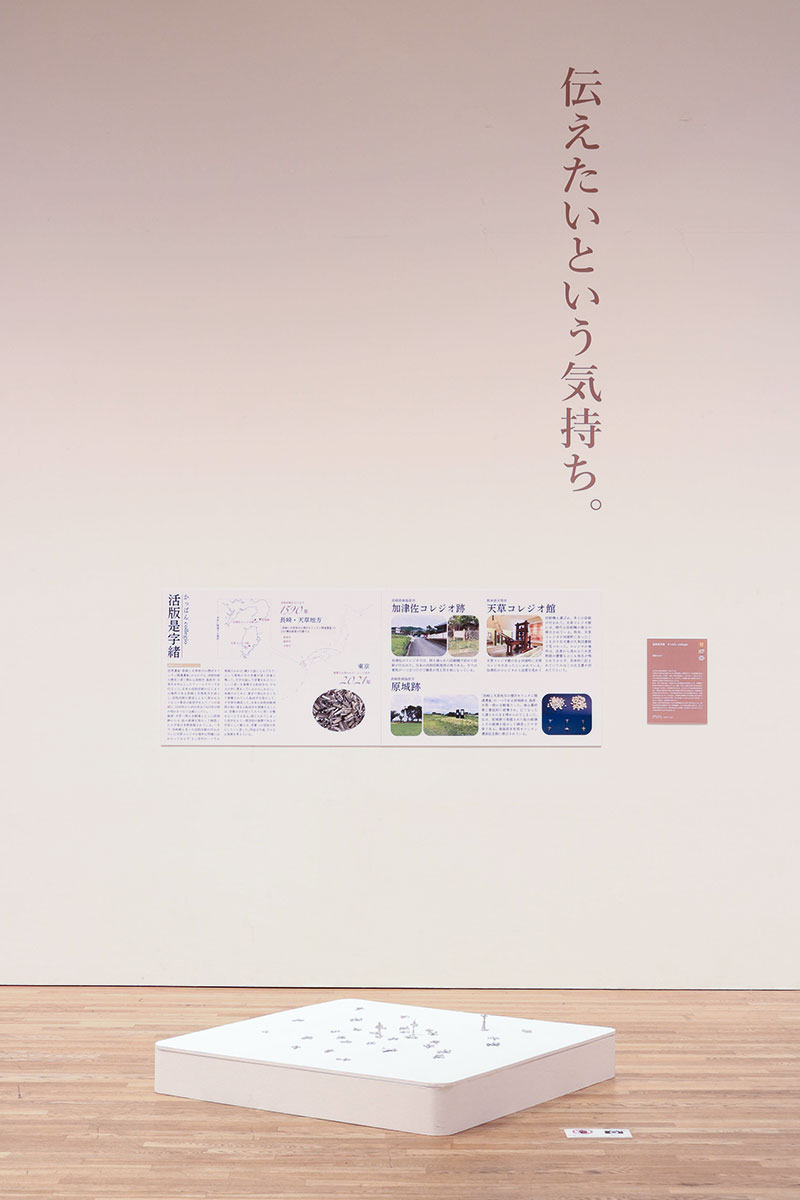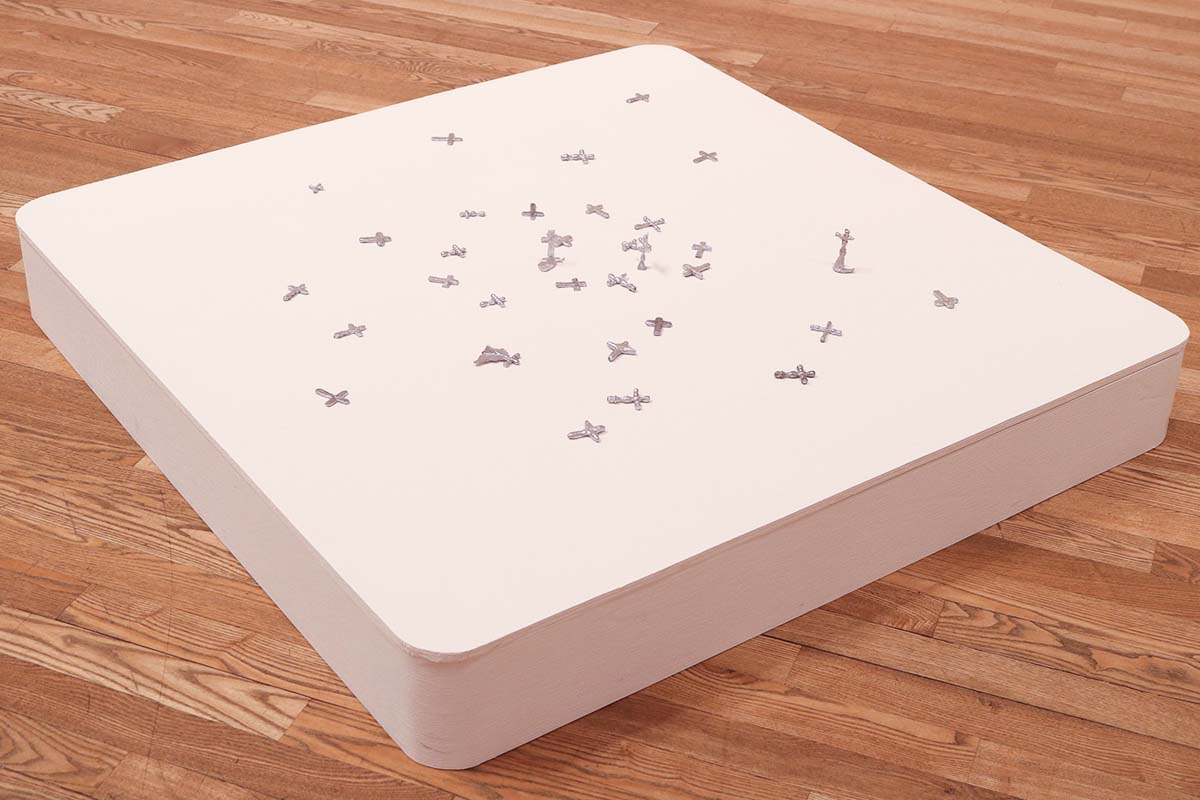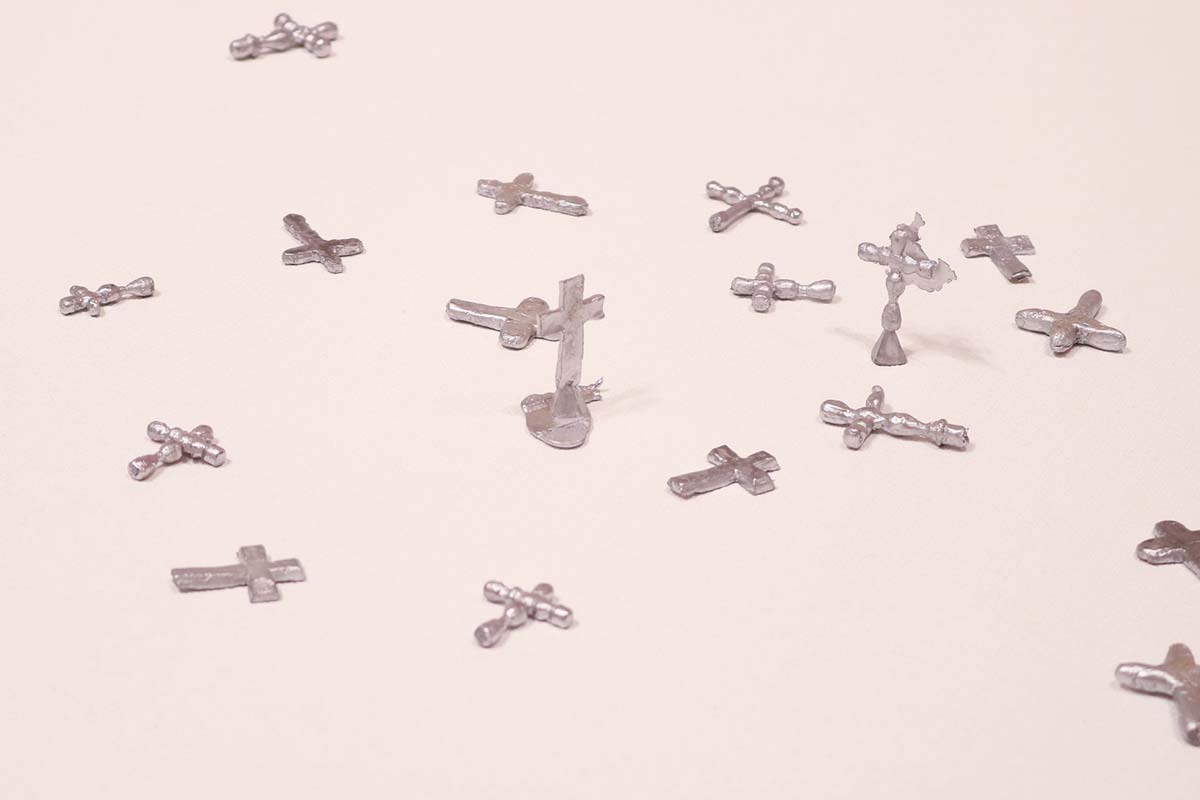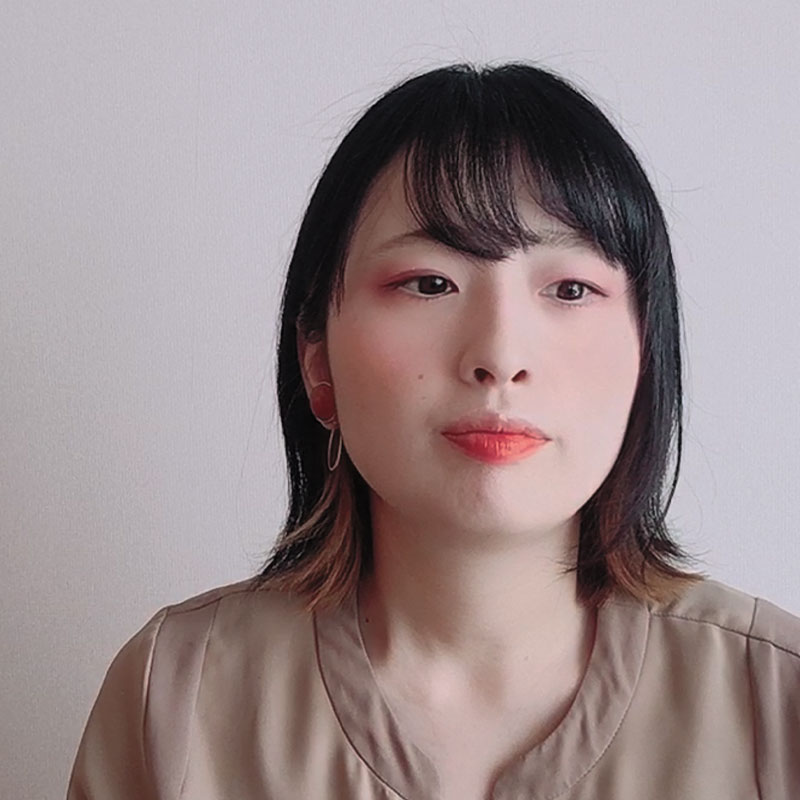“Kappan” collegio活版是字緒 かっぱん collegio
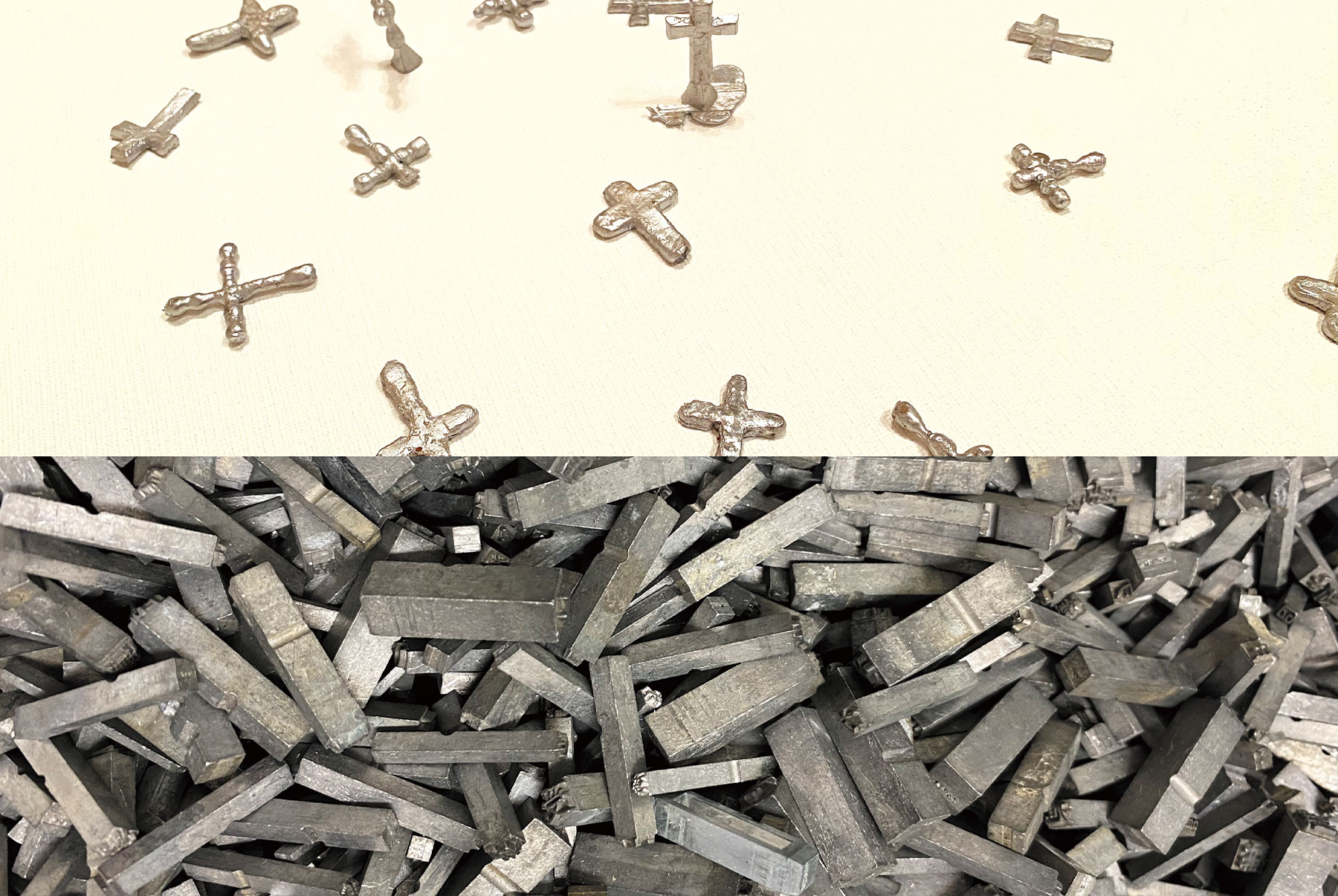
Faith made of lead sleeps in the earth. One of the Hidden Christian sites of the Nagasaki region is the remains of Harajō castle. It was the main battlefield of the Shimabara/Amakusa Rebellion in 1637. Excavations here have uncovered many objects of faith alongside human remains. These include lead crosses cast from melted-down matchlock bullets.
Before the Shimabara Rebellion, in 1590 the Tenshō Embassy brought a printing-press and lead type back to Nagasaki from Europe. The press moved around Shimabara and Amakusa, printing in all the “collegio”, or theological schools. Much of what was printed were Christian texts, and when the bakufu began persecuting Christians, it also prohibited use of the printing-press and lead type. Both disappeared. When tiny pieces of lead type are excavated, it serves as evidence revealing the location of one of the collegio where letterpress printing was carried out.
The lead crosses that were sleeping underground, and the lead type that may yet be sleeping there: these are what I based this work on. In thinking about the connection between the SDGs and the letterpress printing that forms the subject of my research, I came across tangible history in the form of the Hidden Christian sites of the Nagasaki region. I realized that art has the power to give form to intangible histories, or to histories for which a tangible form has yet to be discovered.
土の中には鉛の信仰が、眠っている。「長崎と天草地方の潜伏キリシタン関連遺産」を構成する一つに原城跡がある。1637年に起こった島原・天草一揆の主戦場だ。これまでに、人骨とともにたくさんの信心具が発掘されている。その中に、火縄銃で用いる銃弾を溶かして鋳造された鉛の十字架が見つかっている。
島原・天草一揆より前、1590年には天正遣欧少年使節によって、印刷機と鉛活字が長崎に持ち帰られている。島原、天草へと場所を移しながら各地の「collegio(神学校)」で印刷が行なわれた。多くがキリスト教に関わる書物であり、幕府から禁教令が出されると印刷機や鉛活字も追放される。印刷機も鉛活字も行方がわからない。小さな鉛の活字がどこからか発掘されれば、活版印刷が行われていた「collegio」の場所を具体的に示す証拠にもなるだろう。
土の中に眠っていた鉛の十字架、今もまだ眠っているかもしれない鉛活字。これら二つを緒に、作品制作を行なった。SDGsと自分の研究対象としてきた活版印刷とのつながりを考えたことで、「長崎と天草地方の潜伏キリシタン関連遺産」という形ある歴史に触れた。そして、美術作品の形式でこそ、形に残らなかった歴史・まだ形として見つかっていない歴史を残すことができると思った。
実施時期:2021年
協力:山西もも(鋳造) 吉野俊太郎(什器制作)

